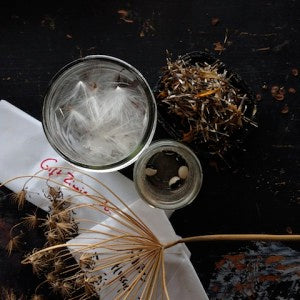 Gardeners, at least the ones we’ve met, tend to have seed-hoarding tendencies. It’s hard to let go of a handful that has so much potential for new life: hundreds of new plants and millions of new seeds! Fortunately, seeds are very smart organisms that are meant to store new life through the seasons. If properly stored, all types of leftover seeds will germinate in the next growing year, and many varieties will remain viable for years to come. To keep your leftover seed population happy and healthy, follow our storage guidelines:
Gardeners, at least the ones we’ve met, tend to have seed-hoarding tendencies. It’s hard to let go of a handful that has so much potential for new life: hundreds of new plants and millions of new seeds! Fortunately, seeds are very smart organisms that are meant to store new life through the seasons. If properly stored, all types of leftover seeds will germinate in the next growing year, and many varieties will remain viable for years to come. To keep your leftover seed population happy and healthy, follow our storage guidelines:
Be sure seeds are completely dry before putting them into long-term storage. Seeds saved at home can be dried in front of a fan, then stored in a paper bag for a few weeks to soak up any remaining moisture.
Pack them into a paper bag or an envelope (junk mail envelopes are great for this!) and add a few kernels of raw rice or a silica pack to act as a moisture “sponge.” Then – place the envelope into a zip-lock bag, a glass jar, or another sealable container that will act as a protective barrier against moisture.
 Jars of seeds at the Seed Library
Jars of seeds at the Seed LibraryThe usefulness of leftover seeds is decreased severely if they are left anonymous. Be sure to label your seeds! Essential label information includes: variety name, seed source, and date the seeds were collected/acquired.
Next, create a good home for your seeds. Moisture and temperature are the most important factors in proper seed storage. Seeds should be kept as dry as possible. Avoid storing them in humid places such as a basement. Temperature should be cool – below 40 degrees, but above freezing. Keeping seeds in the dark also helps them stay dormant. A fridge or a cool garage are fine options for long-term storage.
When you are ready to use your leftover seeds, consider doing a germination test if you have a large amount of stored seeds. Here’s how. If however, you’ve just stored a few – the best test might be to simply plant and see what comes up.
Although the amount of viable seeds may decrease season after season, general life expectancy for common vegetable seeds is:
- 3 years: beans, corn, kohlrabi, peas, spinach,
- 4 years: carrots, winter and summer squash, solanaceous crops
- 5 years: cucurbits, radishes, most brassicas
- 6 years: lettuces





